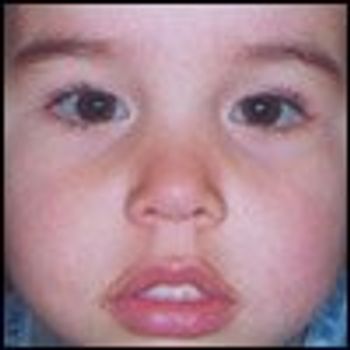
Each of the 21 photographs on the following 4 pages was featured in Dermclinic during the past year. How many of these disorders do you recall?

Each of the 21 photographs on the following 4 pages was featured in Dermclinic during the past year. How many of these disorders do you recall?

For several days, a 9-year-boy has had painful swelling on the top and left side of his forehead, bilateral eye swelling, intermittent fever, and nasal congestion. He was seen in the office 4 weeks earlier, after he had hit his left eye on a school desk. At that time, he presented with a left retro-orbital headache, nasal congestion and discharge, and intermittent fever.

ABSTRACT: Children are at greater risk than adults for many travel-related problems, such as barotitis and barotrauma associated with flying, cold and heat injury, drowning, and infection with geohelminths. Most of these problems can be avoided with appropriate measures. To prevent insect-borne diseases, advise parents to apply permethrin to their children's clothing before the trip and apply slow-release DEET (30% to 35% concentration) to their skin every 24 hours. Infection with ground-dwelling parasites can be avoided by wearing protective footwear. At high altitudes, infants and children may experience acute mountain sickness. Acetozolamide (5 mg/kg/d, divided bid or tid) is an effective prophylactic; however, it is contraindicated in patients with sulfa allergy. Some preventive measures that are effective in adults may not be appropriate for children; for example, several medications used to control motion sickness are ineffective and associated with significant side effects in children.

Consultations & Comments: Advice That Could Help Save a Life Thank you for the excellent review of asthma prevention, classification, treatment, and long-term management in your May 2005 issue ("Asthma Update: Pearls You May Have Missed," page 219). The summary by Drs Linda S. Nield, Lisa Markman, and Deepak M. Kamat should bring most of us up-to-date on the medications and ancillary tools helpful in managing this increasingly prevalent chronic illness.

Consultations & Comments: Do You Recognize This Lesion?

A 3-year-old boy who presents with blue sclerae and a history of tibial fracture following a minor trau- ma (jump from a height of less than 18 inches). Has a long-standing complaint of back pain. Mother remarks that the boy bruises easily. Medical history otherwise unremarkable.